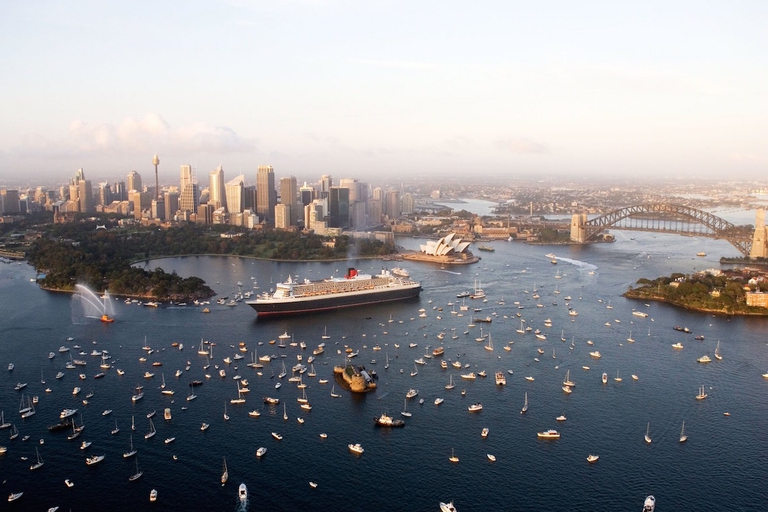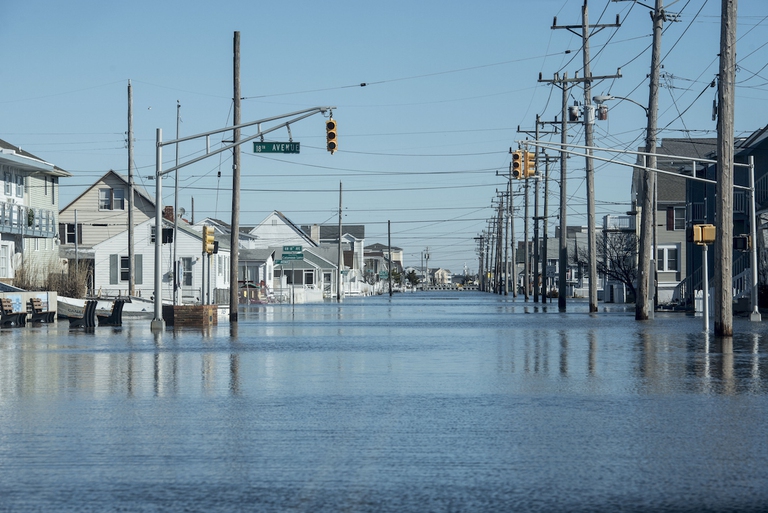
The World Forum on Urban Forests took place from the 28th of November to the first of December. More than 400 experts from 50 countries conversed with politicians, journalists and citizens to design the green cities of the future.
The Antarctic ice sheets are melting more quickly than predicted and sea levels around the world could rise by 1.5 to 2 metres this century – double compared to some previous estimates. This has been met with concerns for 45 million displaced in coastal Chinese cities and major Australian population centres “slipping under the waves”,
The Antarctic ice sheets are melting more quickly than predicted and sea levels around the world could rise by 1.5 to 2 metres this century – double compared to some previous estimates. This has been met with concerns for 45 million displaced in coastal Chinese cities and major Australian population centres “slipping under the waves”, amongst others.
In the United States, huge swaths of Miami and Manhattan lie less than a couple metres above sea level, and New Orleans barely peeks above the sea. In fact, most low-lying neighborhoods in cities on the country’s East Coast would feel the impact of rising water levels. And too often the neighborhoods that face the highest risk of flooding are home to lower-income communities where residents can’t bear the cost of flood insurance and renovations. Cities must lead in protecting their people.
Immediate action to stem the release of greenhouse gases and slowing climate change remains important, and the commitments made by nations and cities at COP21 in Paris offer significant progress in that direction.
Yet regardless of what we do from today on, our climate is transforming in unprecedented ways and we must learn to adapt. Cities must learn to utilise nature to protect homes and businesses. Floodplains, mangrove forests, coral reefs, salt marshes and oysters can all help reduce the impacts of rising seas and storm surge.
In Miami, US-based environmental orgranisation The Nature Conservancy has announced a partnership with an engineering firm to develop new strategies for employing nature to help protect people from rising waters. “Miami-Dade is one of the most economically vulnerable locations on the planet. With over 345 billion dollars in assets and 2.6 million people at risk due to flooding and sea level rise, powerful solutions are needed in order to keep the county safe,” according to Kathy McLeod, Director for Coastal Risk and Investment.
In New York, world-renowned architect Bjarke Ingalls is working with city leaders and federal funding to design a project known as the Dryline: a frill of parks, bike paths and berms that hugs the edge of Lower Manhattan, protecting it from the sort of inundation that cost the city nearly 20 billion dollars during Superstorm Sandy in 2012, as well as creating green spaces for New Yorkers. It’s not about the city “turning its back on the water, but embracing it and encouraging access,” Ingalls told the Guardian.
This is the city of the future. A place where all residents have safe, green neighborhoods where to raise their families and live their lives. We should aspire to a society where we can adapt to and manage a changing world by working with nature and not against it.
Siamo anche su WhatsApp. Segui il canale ufficiale LifeGate per restare aggiornata, aggiornato sulle ultime notizie e sulle nostre attività.
![]()
Quest'opera è distribuita con Licenza Creative Commons Attribuzione - Non commerciale - Non opere derivate 4.0 Internazionale.
The World Forum on Urban Forests took place from the 28th of November to the first of December. More than 400 experts from 50 countries conversed with politicians, journalists and citizens to design the green cities of the future.
Introducing plants into buildings to absorb CO2, eliminating indoor pollution and improving your mood. This is green architecture.
The Semìno project is a journey of discovery through different countries’ food habits, offering migrants employment opportunities and allowing us to enjoy the properties of vegetables from all over the world.
A few of the best ideas for rooftop farms from around the world. Where farm-to-table agriculture is becoming a key components of urban growth.
A great Amazon reforestation project has been agreed in Brazil, the largest in history. Will it endure the victory of Jair Bolsonaro’s far-right politics in the presidential election?
A million plants and 40,000 trees. Liuzhou Forest City, designed by architect Stefano Boeri, is set to be inaugurated in 2020 in the northern Chinese city.
Urban forests are the local answer to global problems. The benefits are numerous and affect many areas such as the climate, biodiversity, health, tourism.
Architects Stefano Boeri’s call to action on urban forestry asks planners all over the world to consider greening our cities as the core element of all projects.
The project is similar to New York’s famous High Line constructed on the railway that once connected the Meat Market to Midtown. But in the case of Seoullo 7017 in South Korea’s capital Seoul, a walkway has been constructed on an overpass dating back to 1970 where cars once sped along, and where today people can wander and enjoy the revitalised area. The Seoullo 7017









